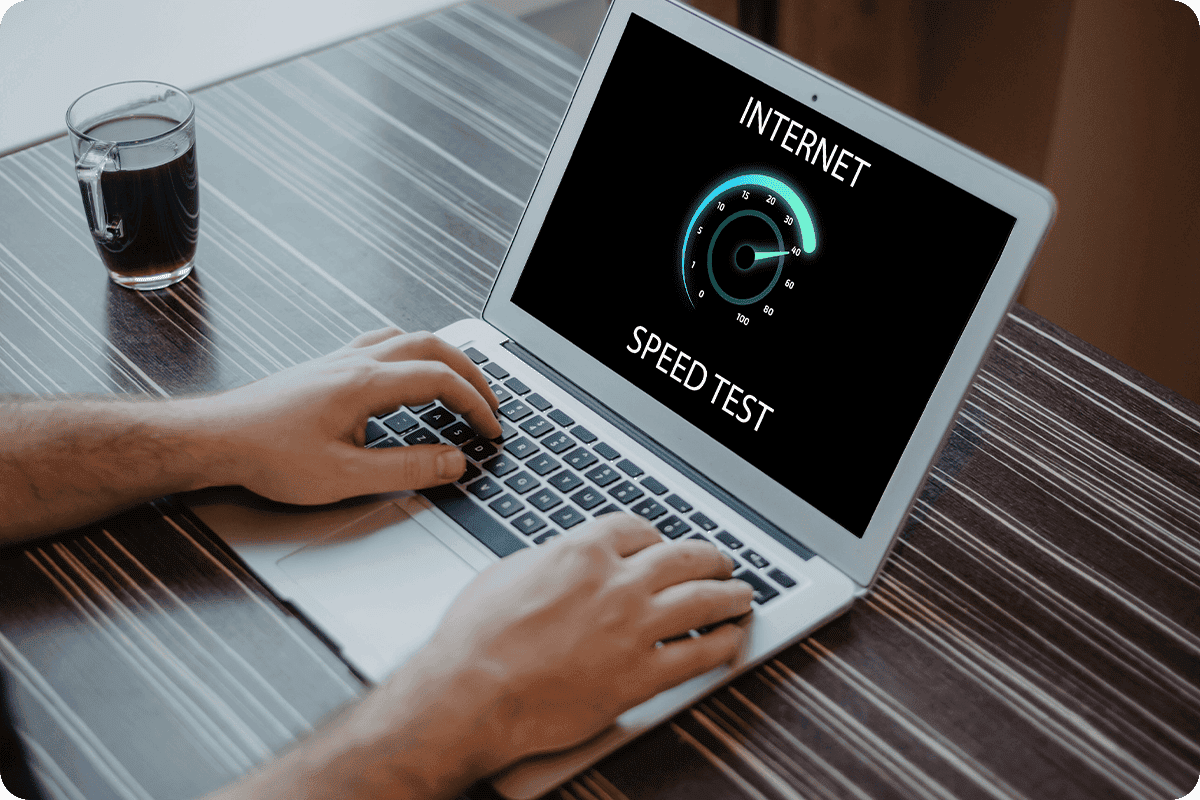What is Bandwidth and How Does It Work?
By: Vincent Totino
Read Time: 4 min
July 24, 2025
Looking for a new Internet provider?
Imagine you're on a video call with a friend, family, or work, and your connection cuts out. You're frustrated and frantic, trying to reconnect while figuring out what's causing the slow connection. If your videos are constantly buffering or web pages take ages to load, chances are you're dealing with low bandwidth.

What Is Bandwidth?
How Bandwidth Affects Network Performance
What Is Bandwidth?
Bandwidth is the fastest rate at which your Internet connection can transfer data and how much data can be sent over your connection in a certain amount of time.
How Bandwidth Affects Network Performance
Let’s say your Internet has a bandwidth of 1,000 Mbps and your cable Internet connection provides around 25 Mbps of bandwidth. When thinking about bandwidth, imagine the network connection is a tube and every piece of data as a grain of sand. If a large quantity of sand tries to move through a small tube, it will take a long time for the sand to pass. If you take the same volume of sand and try to push it through a wider tube, the sand seamlessly flows. Translate this into data speak and it means that downloading will finish much faster with a high bandwidth connection versus a low bandwidth connection.
Internet Speed vs. Bandwidth
Bandwidth and Internet speed are related but they refer to two different Internet functionalities. Internet speed measures how quickly data is transferred from one source to its destination. Bandwidth is how much data can be transferred per second, as the example above highlights.
Are Bandwidth and Internet Speed the Same Thing?
How Do I Check My Bandwidth?
How Do I Check My Bandwidth?
You can check your Internet speed here and assess your megabits per second (Mbps). It is helpful to know what Mbps speed your plan offers, and you can compare that number to the speed calculated by the test.
Like a credit score, the specific number you see when testing your bandwidth isn’t as important as the general range. For example, if you normally get around 30 Mbps for your download speed, but it drops to 5 Mbps during certain times of day, issues may need to be resolved. On the other hand, the difference between 31.23 Mbps and 30.89 Mbps is normal.
Can Bandwidth Cause Poor Latency?
Bandwidth affects your network speed. Latency refers to how long it takes data to move from the primary source to its final destination. Therefore, the higher your bandwidth is, the quicker your download speed. Faster downloads mean less latency.
Latency is affected by factors such as distance, internet connection type, website content, Wi-Fi, and your router.
Can Bandwidth Run Out?
Don’t worry about running out of bandwidth. The Internet will never run out of bandwidth. It can reach a maximum capacity, which simply means that data will require buffering and delivery will be delayed.
Can Bandwidth Cause Poor Latency?
Can Bandwidth Run Out?
Ready to switch to Optimum?
Internet Bandwidth FAQs
Explore more insights about improving bandwidth and how to test your bandwidth.
Why is my bandwidth usage so low?
Your service provider could be the culprit! If you are continually experiencing low bandwidth, it may be time to assess your provider. In addition, sometimes underlying problems may impact bandwidth; it’s also worthwhile to reach out to your provider to inquire about the issue. Certain websites also can exacerbate the bandwidth issue.
How do I fix my bandwidth limit?
You may need to adjust your Internet plan. Reach out to your provider with questions and concerns. If the problem is persistent, consider making a move to a different provider (like Optimum).
How do I change my Wi-Fi bandwidth?
The solution depends on the device you’re using. Windows, Apple, and Android devices require different tactics for changing bandwidth.
How do I reset my router bandwidth?
The best solution for resetting your router bandwidth is to restore its factory settings.





